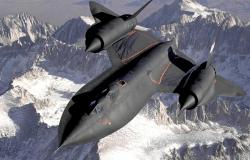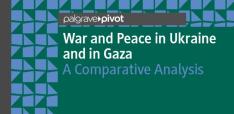Lost Opportunity: How the North Korean Nuclear Crisis Triggered a New Cold War Between China and the United States

Jianyong Yue argues that China’s failure to act during a rare window for cooperation on North Korea may have marked the true origin of today’s U.S.–China Cold War.
Between 2012 and 2018, Beijing missed a narrow but consequential opportunity to contain Pyongyang’s nuclear ambitions. Its unwillingness to act decisively was not just a regional misstep—it was a pivotal, if underappreciated, turning point in the slide toward great-power confrontation.
After the Cold War, the world briefly entertained the illusion of a liberal peace. But as power shifted and tensions grew, the North Korean nuclear crisis emerged as a key inflection point. Faced with a fleeting strategic opening, China chose tactical caution over structural transformation. In doing so, it enabled North Korea to cross the nuclear threshold and forfeited a chance to reshape the East Asian order—and avoid a new era of strategic rivalry.
The Fallacy of Stability Through Nuclear Deterrence
Kenneth Waltz’s 2012 Foreign Affairs article, “Why Iran Should Get the Bomb,” argued that nuclear proliferation could restore strategic balance, based on Cold War logic of mutually assured destruction. But this rested on three flawed assumptions: rational actors, controllable escalation, and stable regional systems.
History disproves these. In 1983, Soviet misreading of NATO’s Able Archer exercise nearly triggered nuclear war. In 2019, following India’s Balakot airstrike, nuclear-armed India and Pakistan teetered on the brink—averted only by urgent U.S. intervention. Today’s multipolar world shows nuclear weapons have not curbed adventurism; rather, regimes like North Korea and Iran grow bolder under great power patronage.
Waltz’s “limited proliferation” theory has collapsed. Iran’s and DPRK’s nuclear advances have spurred nuclear ambitions in Saudi Arabia, Turkey, South Korea, Japan, and Taiwan, unraveling the global non-proliferation regime and normalizing nuclear thresholds.
North Korea’s Path to Tactical Nuclearization
North Korea stands apart as the most destabilizing nuclear actor. Unlike Iran, whose program remains constrained by domestic politics and external scrutiny, Pyongyang has mastered the fusion of nuclear warheads with conventional delivery systems—dramatically lowering the threshold for use.
Its emerging doctrine integrates tactical nuclear weapons into conventional forces—a shift confirmed by 2023 military drills and official statements—normalizing battlefield nuclear weapons.
More alarmingly, North Korea’s arsenal is not aimed solely at the United States. In a secret meeting on March 31, 2018, with then–CIA Director Mike Pompeo, Kim Jong-un warned that China sought the removal of U.S. troops so it could “treat the peninsula like Tibet and Xinjiang.” He insisted that the American presence was not a threat, but a safeguard—against Beijing. Kim bluntly called Chinese leaders “liars,” casting China, not the United States, as the greater existential threat.
Missed Opportunity I: When Washington Blinked
In 1994, as Pyongyang prepared to reprocess plutonium at Yongbyon, the Pentagon drafted plans for a preemptive strike using F-117s and cruise missiles. Fallout was assessed with regional partners, including Seoul and Tokyo. China’s military posed little deterrent, and Russia was cooperative.
But Washington blinked. South Korean President Kim Young-sam opposed military action. U.S. officials, fearing Chinese backlash, shelved the plan and opted for the Agreed Framework. Beijing, however, had already begun distancing itself from Pyongyang.
North Korea responded by quietly building uranium enrichment capacity, laying the foundation for future tests.
The U.S. misread Beijing’s intent—and overestimated its leverage over Kim. Strategic paralysis followed. Northeast Asia paid the price.
Missed Opportunity II: China Flinched in 2017
The second—and arguably final—window emerged between 2012 and 2017. North Korea conducted five nuclear tests. The fifth, in 2016, suggested miniaturization; the sixth, in September 2017, confirmed thermonuclear capability. Yet Pyongyang did not declare a completed deterrent until April 2018, following a year of uninterrupted missile tests.
During this period, internal debates surfaced within Chinese strategic circles. In June 2013, independent strategist Fu Bo (伏波) published a confidential proposal in the internal journal Leaders. He outlined a bold alternative: cut economic ties to Pyongyang to force denuclearization, prepare for military intervention to collapse the regime if conflict erupted, and establish a permanently neutral postwar Korea—an “Austria-ization” of the peninsula—as a strategic buffer between China and the United States.
PLA researchers quietly explored intervention scenarios in this spirit. In September 2013, RAND analyst Bruce W. Bennett warned that China might move to secure WMD sites and exert control over key areas in a post-Kim environment—implicitly echoing Fu’s vision. These overlapping concerns opened the door to potential U.S.–China cooperation.
Beginning in 2017, President Trump linked progress on North Korea’s nuclear issue to the escalating trade dispute with China—signaling that Beijing’s assistance in constraining Pyongyang could avert tariffs. It was a transactional offer with significant strategic upside.
Beijing appeared momentarily persuaded in the run-up to the Mar-a-Lago summit in April 2017.
But Kim Jong-un acted first. Between March and June 2018, he made three unannounced visits to Beijing—his first since assuming power—offering gestures of reconciliation. During his initial visit (March 25-28), just days before a secret meeting with Pompeo in which he harshly criticized Beijing, Kim praised Xi Jinping, thanked him for treating him like a “big brother,” reiterated vague denuclearization commitments, and referred to China as North Korea’s staunch ally.
Swayed by Kim’s carefully staged charm offensive—crafted to play to Xi’s desire for deference—Xi abandoned the emerging U.S.–China understanding and pivoted back to Pyongyang. The tentative consensus collapsed.
Trump felt betrayed. He called China a “world-class poker player” and accused it of undermining diplomacy. In mid-2018, the U.S. launched tariffs that sparked a trade war, defining the next four years.
In hindsight, however, the true master strategist was neither Trump nor Xi. It was Kim—who skilfully played both sides, secured nuclear leverage, and walked away with the pot.
Two Strategic Losses for China
By siding with Kim, China suffered two irreversible losses.
First, it missed a once-in-a-generation chance to resolve the nuclear crisis decisively, securing both denuclearization and regional influence. Had China supported reunification under strict neutrality, it might have dismantled the U.S.–South Korea alliance and emerged as Northeast Asia’s diplomatic anchor.
Second, it lost valuable time. Between 2013 and 2020, China still had the opportunity to rebalance its economy, strengthen indigenous innovation, and reduce its dependence on U.S. technology—evolving into a Germany- or Japan-like economic superpower, resilient to decoupling from the industrial West. But the collapse of trust after 2018 accelerated the very decoupling China feared and galvanized bipartisan American consensus around strategic containment.
What was once a manageable rivalry has escalated into a full-spectrum Cold War—“both necessary and desirable,” as Niall Ferguson has observed.
Conclusion: A Fork in History
The demise of the “Fu Bo Plan” was more than a regional misstep; it exemplified Beijing’s chronic short-sightedness on issues of global strategic consequence. It marked a turning point in the world order—ending great-power cooperation on non-proliferation, shattering U.S.-China diplomatic trust, and emboldening rogue states pursuing nuclear legitimacy.
The deeper tragedy lies not only in what was done, but in what was left undone. At a fleeting moment when interests aligned, when North Korea could still be stopped, and a new regional architecture might have emerged, both powers faltered.
Today, as nuclear risks rise alongside AI-driven warfare and fractured global governance, the lessons of the Korean crisis remain clear: strategic foresight—not raw power alone—will shape the future. For democracies with nuclear arsenals, demonstrating credible resolve at decisive moments remains essential to upholding the rules-based international order.
For China—though not a democracy—boldly seizing opportunities for denuclearization would both advance global peace and serve its own long-term interests. Ultimately, peace is not a passive inheritance but a rare, fragile opportunity that great powers must dare to grasp.
Jianyong Yue is a visiting fellow at the London School of Economics and previously taught Chinese politics and development at King’s College and LSE. He published China’s Rise in the Age of Globalization: Myth or Reality (Palgrave Macmillan, 2018) and Crony Comprador Capitalism: The Institutional Origins of China’s Rise and Decline (Palgrave Macmillan, 2024).
Photo by Pixabay


